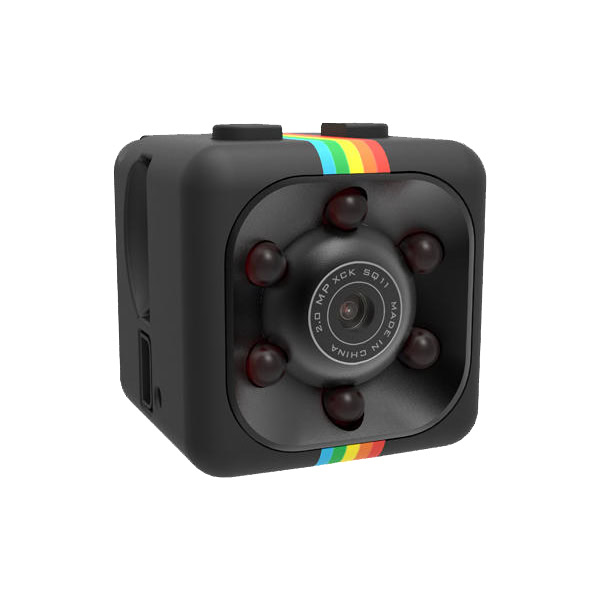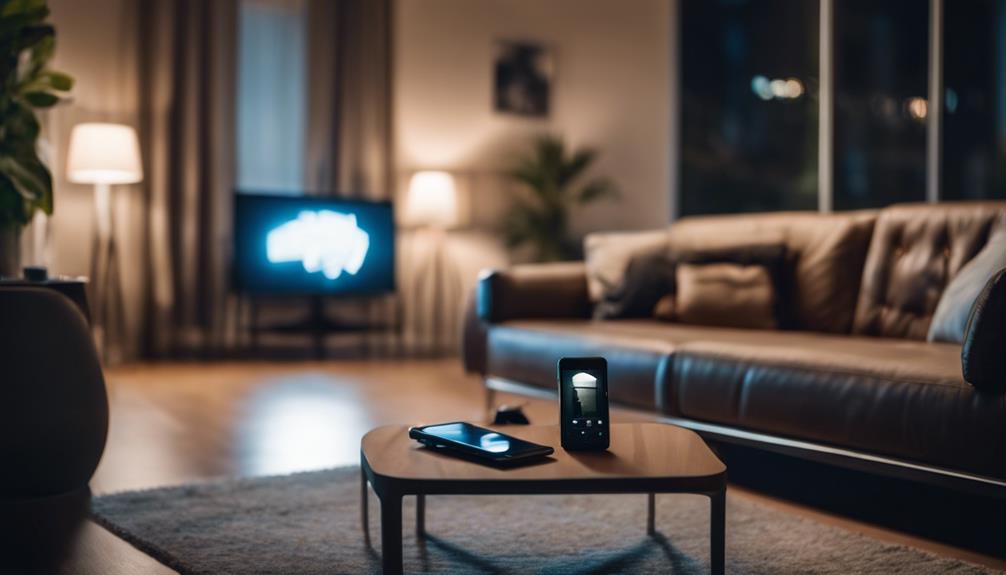
Brainstorm Security Shop

For Orders Over $199

On Any Of Our Products

Details On Refund Page
As you consider enhancing your home’s security, a system with motion-activated alerts might be right up your alley. These systems not only notify you of any unexpected movements but also adapt to your daily routines, minimizing false alarms and ensuring genuine threats aren’t overlooked. You’re probably wondering how such a system can distinguish between a burglar and, say, your pet. This is where the sophistication of modern sensors comes into play, designed to differentiate between various sizes and heat signatures. Curious about how this technology works and whether it’s a fit for your home? Let’s explore some intriguing functionalities and potential setbacks you might encounter with a home security system.
Motion-activated alerts notify you the moment your security system detects movement. This technology harnesses sensors that are finely tuned to recognize the presence of humans by picking up on heat signatures or changes in the environment, such as movement. Once triggered, the system sends an immediate notification to your chosen device, whether it’s your smartphone, tablet, or computer, allowing you to respond swiftly.
Setting up these alerts involves a straightforward process. You’ll typically use an app associated with your security system to customize the settings. Here, you can define the sensitivity of the sensors, deciding how much movement is required to trigger an alert. You can also specify certain areas of your home you deem more critical, like entry points and large windows, and focus the sensors to be more active in these zones.
Moreover, you don’t need to be a tech wizard to manage these settings. The apps are designed with user-friendliness in mind, featuring simple, intuitive interfaces. This ease of configuration ensures that you can adapt the system as your security needs change, without needing professional help every time you want to make an adjustment.
While enhancing your home’s security, motion sensors also reduce energy costs by activating lights only when needed. You’ll find that these smart devices not only light up areas when someone is present but also ensure that you’re not wasting electricity in empty rooms. This dual functionality makes them a cost-effective and eco-friendly addition to your home.
Beyond the savings, the presence of motion sensors significantly boosts your security level. When integrated with your home security system, these sensors alert you to any unexpected movement, giving you real-time updates. Whether you’re home or away, you’ll receive notifications directly on your smartphone, so you’re always in the loop if something’s amiss.
Moreover, the psychological deterrent of having visible motion sensors can’t be underestimated. Potential intruders are likely to think twice before approaching a property that appears well-protected. This adds an extra layer of defense, helping to prevent break-ins before they occur.
Lastly, your peace of mind is invaluable. Knowing that you’ve equipped your home with this technology allows you to relax more, whether you’re at home sleeping or abroad on vacation. You’re not just protecting your property; you’re ensuring the safety of your loved ones as well.
Installing your new motion sensors is straightforward, even if you’re not particularly handy. First, you’ll need to decide where to place the sensors. Common spots include near entry points like doors and windows or in hallways. Make sure they face the area you want to monitor, avoiding any obstructions like large furniture or plants.
Next, follow the manufacturer’s instructions to mount the sensors. Most models come with adhesive strips or screws. If you’re using adhesive, clean the surface thoroughly first to ensure a strong bond. For screw installations, you might need a drill. Position the sensor at the recommended height, typically around 6 to 8 feet above the floor to maximize coverage.
Once mounted, it’s time to connect the sensors to your main security system. This could be via wireless connection or wired setup, depending on your model. Turn on the power and test each sensor by walking past them to see if they trigger an alert. Adjust the sensitivity settings if necessary to avoid false alarms from small pets or passing cars.
Now that you know how to install motion sensors, choosing the right system for your home is the next step. It’s crucial to consider what features align best with your security needs. Start by assessing the size of your home. Larger properties may require systems that can handle multiple sensors and cameras, while a smaller space might only need a basic setup.
Consider the connectivity options. Do you prefer a system that integrates with your smartphone for real-time alerts, or are you okay with a more traditional, standalone system? Wireless systems offer easier installation and flexibility, but wired systems might be more reliable and less prone to interference.
Think about the level of customer support offered. If you’re not tech-savvy, it’s worth choosing a system from a company that provides robust support and installation help. This can save you headaches down the line.

Lastly, review the system’s expansion capabilities. As your needs grow, you’ll want a system that can adapt without requiring a complete overhaul. Look for systems that allow you to add more sensors or cameras as needed.
Taking these factors into account will help you choose a home security system that fits your specific needs and provides peace of mind.
To enhance your home security system’s efficiency, focus on optimizing sensor placement and regularly updating software.
You’ll want to place motion sensors in high-traffic areas, but avoid spots where pets or routine movements might trigger false alarms. It’s crucial to assess each sensor’s field of view; ensure there are no blind spots intruders could exploit.
Regular software updates are equally important. They often include patches for security vulnerabilities and improvements in detection algorithms, which reduce false alerts and save you from unnecessary stress. Check for updates from your system’s manufacturer and apply them promptly to keep your system running smoothly.
Additionally, consider integrating smart home technology. Connecting your motion-activated alerts with smart lighting or audio systems can deter intruders by simulating presence in your home. You can set up scenarios where lights turn on or music starts playing when motion is detected, adding an extra layer of security.
Lastly, review and analyze alert patterns periodically. This helps you understand when and where potential threats are most likely to occur, allowing you to adjust settings or add more sensors as needed to cover all vulnerable points around your property.
Staying proactive in these ways ensures your system remains efficient and effective.
You may encounter several challenges when setting up and maintaining your home security system; here’s how to address them effectively.
Firstly, false alarms can be a frequent issue, often triggered by pets or passing cars. To minimize these, adjust the sensitivity settings of your motion detectors and consider using pet-immune sensors if you have animals at home.
Another common problem is losing connectivity, which can leave your property unprotected. Ensure your system has a reliable backup power supply and internet connection. You might want to invest in a system that offers cellular backup in case your Wi-Fi goes down.
Camera placement can also be tricky. You need to cover all entry points without creating blind spots. It’s crucial to position cameras at an optimal height and angle, ensuring they’re out of reach from potential tampering but still capable of capturing clear footage.
Lastly, software updates are essential for keeping your security system effective against new threats. Set your system to update automatically or set a regular schedule to check for updates manually.
You’ve now seen how a home security system with motion-activated alerts can significantly enhance your home’s safety and efficiency. By choosing the right system, installing it correctly, and optimizing its settings, you’ll enjoy peace of mind knowing your property is well-protected.
Tackle any challenges with our straightforward solutions, and you’ll maximize the benefits of your new security setup. Stay secure and in control with your new, advanced motion-activated alert system.

Brainstorm Security Shop
1867 Caravan Trail
Ste 105
Jacksonville, FL 32216
Call us toll free: (800) 859-5566